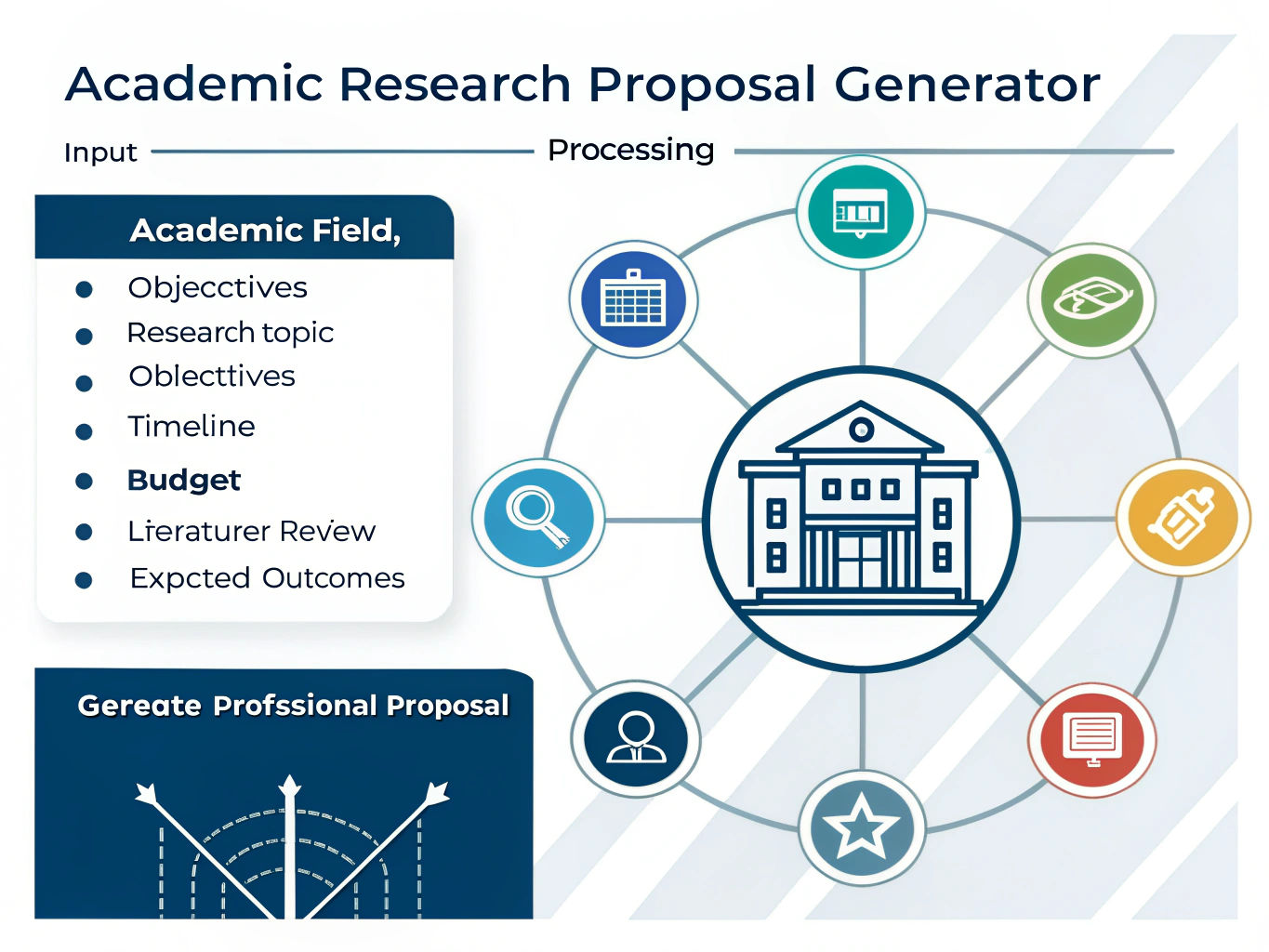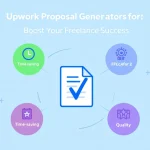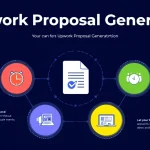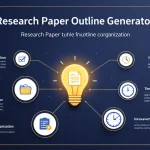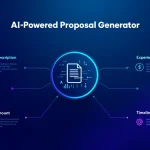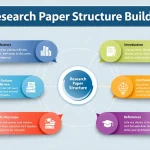Academic Research Proposal Generator
Create a comprehensive research proposal by filling out the form below. Required fields are marked with an asterisk (*).
Is this tool helpful?
How to Use the Academic Research Proposal Generator
Start by entering your research topic in the first field. For example, you might write “The Effects of Mindfulness Training on Healthcare Worker Burnout” or “Machine Learning Applications in Renewable Energy Optimization.” Your title should clearly communicate what you’re studying.
Next, specify your academic field. You can enter broad disciplines like “Public Health” or “Computer Science,” or be more specific with “Environmental Psychology” or “Biomedical Engineering.” This helps tailor the proposal structure to your field’s conventions.
In the research objectives section, outline what you want to achieve. Structure this with primary and secondary goals. For instance:
- Primary: To measure the effectiveness of a 12-week mindfulness intervention on reducing burnout symptoms among emergency department nurses
- Secondary: To identify demographic factors that predict intervention success and develop implementation guidelines for hospital administrators
Choose your methodology approach carefully. Options include “randomized controlled trial,” “ethnographic study,” “systematic review and meta-analysis,” or “longitudinal cohort study.” Your choice should match your research objectives and field standards.
The optional fields let you add depth to your proposal. Include timeline estimates like “18 months” or “3 years,” budget ranges such as “$25,000-$40,000,” relevant literature citations, and expected outcomes that demonstrate your research’s potential impact.
What Is an Academic Research Proposal Generator?
An academic research proposal generator is a specialized tool that helps researchers, graduate students, and faculty members create comprehensive research proposals quickly and efficiently. This AI-powered assistant transforms your research ideas into professionally structured proposals that meet academic standards across various disciplines.
The tool addresses one of the biggest challenges in academic research: translating innovative ideas into compelling, well-organized proposals that funding agencies, dissertation committees, or institutional review boards will approve. Instead of starting with a blank page, you get a structured framework that guides you through each essential component.
Key Benefits for Researchers
You save significant time by automating the initial drafting process. Rather than spending weeks crafting your first draft, you can generate a solid foundation in minutes. The tool ensures you don’t miss critical sections that reviewers expect to see in academic proposals.
The generator helps maintain consistency in formatting and structure across different sections. This professional presentation increases your proposal’s credibility and makes it easier for reviewers to evaluate your research merit.
For international researchers or those writing in their second language, the tool provides proper academic language and terminology that meets publication standards. You get clear, professional prose that effectively communicates your research vision.
Practical Applications Across Academic Disciplines
Grant Funding Applications
Use the generator to create compelling grant proposals for federal agencies like NSF, NIH, or private foundations. The tool structures your narrative to highlight innovation, methodology, and potential impact—key criteria that funding panels evaluate.
You can adapt the generated content for different funding sources by emphasizing relevant aspects. For industry partnerships, focus on practical applications. For academic grants, emphasize theoretical contributions and peer review processes.
Dissertation and Thesis Proposals
Graduate students benefit from the tool’s comprehensive approach to proposal writing. The generator ensures you address methodology, literature review, timeline, and budget considerations that dissertation committees require.
The structured output helps you organize complex research ideas into clear, logical arguments. This clarity proves essential when defending your proposal before faculty committees who may not share your specialized expertise.
Institutional Review Board Submissions
For research involving human subjects, the generator helps you articulate your methodology and objectives clearly. IRB reviewers need to understand your research procedures, participant protections, and data handling practices.
The tool’s emphasis on methodology and expected outcomes supports your ethics review process by demonstrating that you’ve carefully considered research design and participant welfare.
Optimizing Your Research Proposal Content
Methodology Selection and Description
Your methodology choice drives everything else in your proposal. Quantitative approaches require sample size calculations, statistical analysis plans, and measurement instruments. Qualitative methods need participant recruitment strategies, data collection protocols, and analysis frameworks.
Mixed methods designs combine both approaches, requiring you to explain how quantitative and qualitative components integrate to answer your research questions. The generator helps you articulate these complex methodological decisions clearly.
Literature Integration Strategies
Strong proposals demonstrate deep knowledge of existing research while identifying clear gaps your study addresses. Use the literature background section to position your work within current scholarly conversations.
Reference recent meta-analyses, systematic reviews, and landmark studies that establish your research’s theoretical foundation. Show how your methodology improves upon previous approaches or explores understudied populations.
Timeline and Budget Considerations
Realistic timelines demonstrate project feasibility. Break complex studies into phases: preparation, data collection, analysis, and dissemination. Account for potential delays in recruitment, equipment procurement, or data processing.
Budget estimates should reflect actual costs for personnel, equipment, travel, and indirect expenses. Research administrators can help you calculate accurate figures for your institution’s overhead rates and salary scales.
Advanced Features for Professional Proposals
Interdisciplinary Research Support
Modern research often crosses traditional disciplinary boundaries. The generator accommodates interdisciplinary projects by helping you explain how different methodological approaches complement each other.
You can describe how team members from various fields contribute unique expertise to your research objectives. This collaborative approach often strengthens funding applications and demonstrates innovation.
Impact and Dissemination Planning
Funding agencies increasingly emphasize broader impacts beyond academic publications. Use the expected outcomes section to describe how your research influences policy, education, or community practice.
Detail your dissemination strategy including academic conferences, peer-reviewed journals, policy briefs, and public engagement activities. This comprehensive approach demonstrates your commitment to maximizing research impact.
Best Practices for Proposal Development
Iterative Refinement Process
Use the generator’s output as your starting point, not your final product. Review each section carefully and expand on areas that need more detail. Add specific citations, refine methodology descriptions, and strengthen your theoretical framework.
Share drafts with colleagues, mentors, and potential collaborators. Their feedback helps identify weaknesses in logic, methodology, or presentation that you might miss when working independently.
Alignment with Funding Priorities
Successful proposals demonstrate clear alignment with funder priorities and review criteria. Study program announcements carefully and tailor your generated content to address specific requirements and evaluation standards.
Use keywords and concepts from funding announcements throughout your proposal. This alignment helps reviewers quickly identify how your project meets their program’s objectives and increases your competitive standing.
Important Disclaimer
The calculations, results, and content provided by our tools are not guaranteed to be accurate, complete, or reliable. Users are responsible for verifying and interpreting the results. Our content and tools may contain errors, biases, or inconsistencies. Do not enter personal data, sensitive information, or personally identifiable information in our web forms or tools. Such data entry violates our terms of service and may result in unauthorized disclosure to third parties. We reserve the right to save inputs and outputs from our tools for the purposes of error debugging, bias identification, and performance improvement. External companies providing AI models used in our tools may also save and process data in accordance with their own policies. By using our tools, you consent to this data collection and processing. We reserve the right to limit the usage of our tools based on current usability factors.
